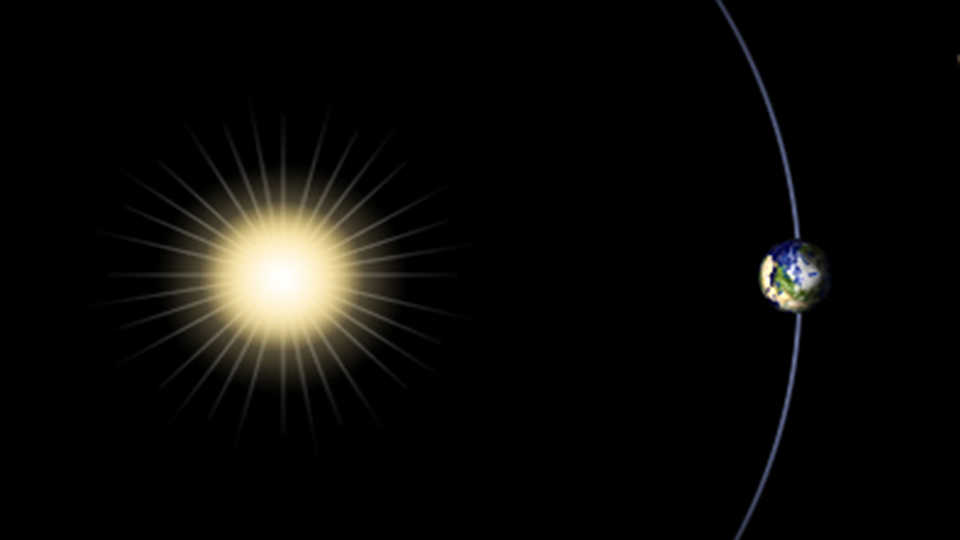In this activity students will:
- understand the astronomical meaning of an earth year.
- learn the difference between a rotation and an orbit.

"Earth's Orbit" © 2015 NASA/JPL-CalTech
In this interactive lesson, students will use kinesthetic techniques to model Earth's orbit around the Sun for a year.
In this activity students will:
This lesson uses kinesthetic techniques to introduce Earth’s orbit around the Sun and to construct the meaning of “orbital period.” NSF Indicators of Science & Engineering 2002 reports that about 50% of a representative sample of the U.S. public are unaware that it takes one year for Earth to orbit the Sun.
There is also a common confusion between use of the terms “rotation” and “orbit”. “Rotation” is often mistakenly used to describe the motion of Earth orbiting the Sun. It is important to make the distinction between these terms very clear. Each day Earth rotates once on its axis; each year Earth orbits the Sun.
Our day and year are based on Earth’s periodic motion: one Earth rotation on its axis equals one Earth day; one Earth orbit around the Sun equals one Earth year. Other planets in the solar system have different rotational and orbital periods, so the length of a day or year is different on each planet (see page 2).
Use the chart in the teacher background information to compare and contrast the astronomical meaning of a year and a day for the different planets in our solar system. Have them write a story about how living on those planets might be different from living on Earth.
This lesson is adapted from the Kinesthetic Astronomy program developed by the Space Science Institute, 2004.
Image: "Earth's Orbit" by NASA/JPL-CalTech, originally sourced from https://images.nasa.gov/
Fifth Grade
5-ESS1-2: Represent data in graphical display to reveals patterns of daily changes in length and direction of shadow, day and night, and seasonal appearance of some stars in the night sky.
Middle School
MS-ESS1-1: Develop and use a model of the Earth-sun-moon system to describe the cyclic patterns of lunar phases, eclipses of the sun and moon, and seasons.